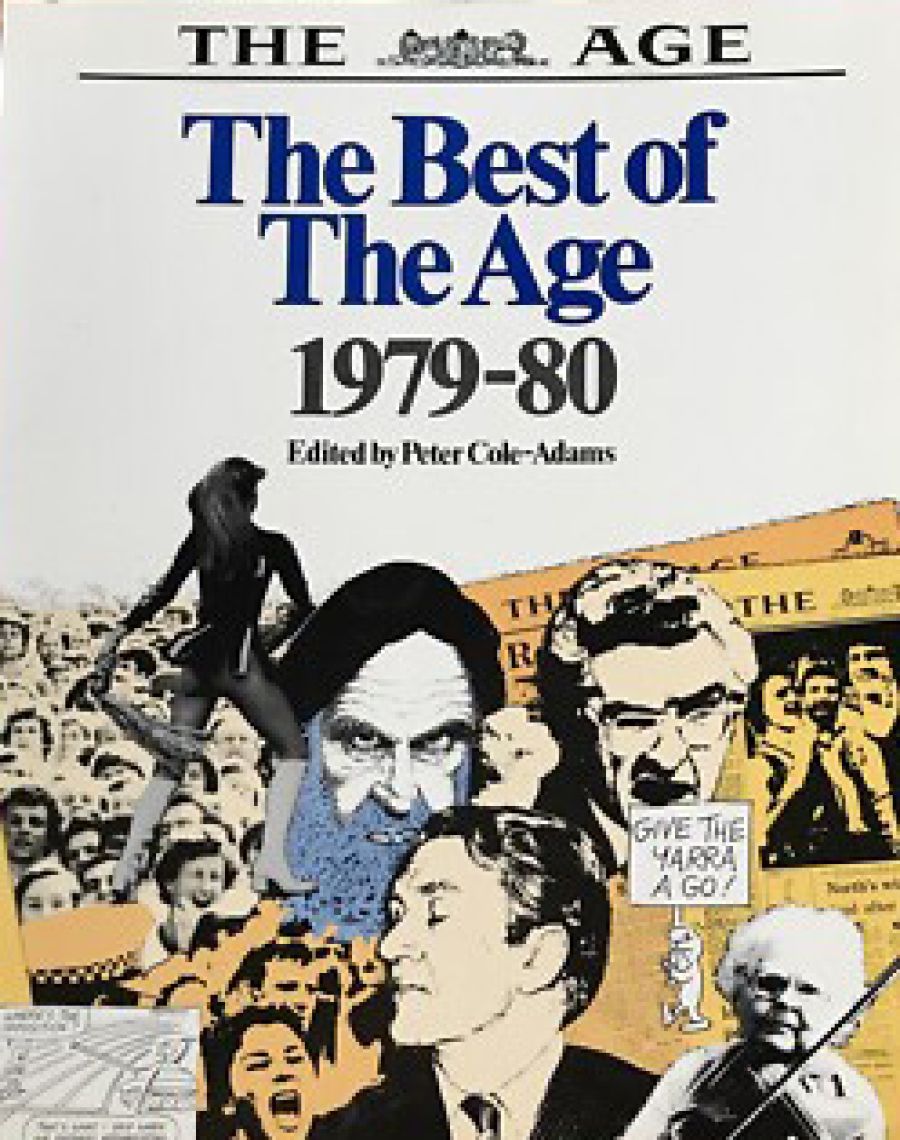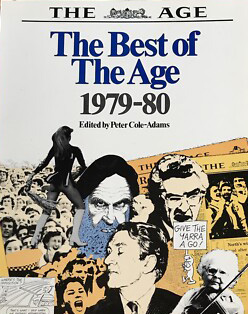
- Free Article: No
- Contents Category: Australian History
- Review Article: Yes
- Article Title: The Layout of the Land
- Online Only: No
- Custom Highlight Text:
The best of a newspaper should be, or used to be, news. But in the electronic age, when sheer questions of the very survival of print media are raised often enough, mere news is not enough. The press has those functions of interpretation, comment and backgrounding which electronic news gathering rarely has time for or interest in, and one of the qualities which marks a quality paper is its activities in these areas. And the quality of those activities.
- Book 1 Title: The Best of The Age 1979-1980
- Book 1 Biblio: Nelson, 182 pp
- Book 1 Cover Small (400 x 600):

- Book 1 Cover (800 x 1200):

When he took over as editor of the Melbourne Age, Michael Davie declared an intention to encourage good writing. This volume appears to indicate a desire to preserve as well as encourage for it is a sample of Age writing over the year, writing which ranges over politics, sport, crime, the media, women’s affairs, the environment and just about anything else newspapers can legitimately have an interest in. Whether it is all good writing or not is probably a matter of individual taste. Whether much of it is worth preserving is even more questionable, unless it be as a record of Melbourne and the flavour of that city’s views. The Age, which may be the best newspaper in the country, and may be a great newspaper, is certainly a Melbourne newspaper, with some of the strengths and failings of that interesting city.
The tone is best caught both in the selection of items (isn’t it regrettable, though, that the very first piece, nicely done as it is, should have as its subject that done-to-death topic of the Windsor abdication?) and in the tenor of editorials, which present the voice of reasonable, cautious middle Australia, enlightened enough, but with no enthusiasm for radical solutions.
If the style of pieces from different writers sometimes gives the impression of having passed across the same subeditorial desk, and if what are unpleasantly called lifestyle pieces seem to predominate, this is a proper reflection of the modern newspaper’s need to entertain.
A further reflection of the same need is to be found in two of the newspaper’s great strengths, the work of its photographic staff and of its black and white artists. The former, despite The Age's reputation for being light years distant from a Tits and Tips or Bets and Boobs approach, includes a number of barebreasted females among its subjects, while managing perhaps as a gesture of anti-sexism to include the uncovered penis twice. (Whether the paper’s advice to racing fans is adequate I have no way of knowing, though it seems a pity that the two pieces on horse-racing deal with good horses being destroyed; some of the splendid writing on the turf from former editor Les Carlyon would have been a valuable addition.)
The photographers also cover politics and there are two portraits which will be cherished by those who follow descriptions and scores of the game – Hawke, all stops out, haranguing the A.C.T.U. Congress, and Fraser, emerging from a Press conference head back, eyes closed, jaw jutting, the very image of lofty disdain, of arrogant unconcern, which his opponents see as the essence of the man. The Tandberg cartoon which accompanies the shot, and which won him his third Walkley award for Best Cartoon of the Year, is an indication of the strength of the paper’s team of black and white cartoonists and illustrators. Yet team is clearly the wrong word, because the central quality of the cartoonist is his individualism and the strength of The Age group is their diversity. Horner and Spooner as illustrators, Tanner and Nicholson as cartoonists, in a more traditional sense Petty as wide ranging social critic, Leunig as himself, tapping the realms of a marvellously fey imagination, and Tandberg, master of the epigram, as the most aggressive, anger and scorn conveyed in a very few words and even fewer lines. It is not difficult to sense the strain between the staid, cautious, reasoned editorial tone and the sharp-cutting edge of the cartoonists’ satire. It would be interesting to know how many Tandbergs are rejected.
For all its value as an occasional read, this volume stands as well as some sort of record of the newspaper that prides itself on being the best in the country. As far as Melbourne is concerned, there is nothing to beat; The Sun has declined to a level of substance comparable with a suburban throwaway, The Australian has acquired a tone of intellectual hooliganism without the saving grace of healthy larrikinism, while The Herald, looking tired, is nevertheless fighting a holding battle against the world-wide trend towards the decline of afternoon-evening papers.
The Age is important therefore at the state and national level. But one's fears centre on a piece by the editor himself in which he proclaims editorial independence and then admits that there has been Board intervention during election campaigns only five times in thirteen years. Haven’t there been exactly six federal elections in those years?


Comments powered by CComment